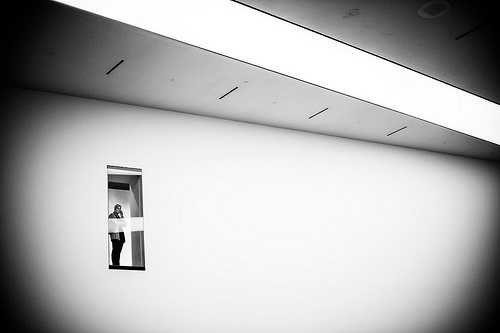
April 29, 2015; Forbes
Sometimes, a visit to a museum may not be possible for individuals with disabilities. For many pieces of art, access is an insurmountable problem. Consider the stairs of the Eiffel Tower in Paris, the tiny elevators within Eero Saarinen’s Gateway Arch in St. Louis, or the unusual dimensions within all planetarium theaters.
Enter Beam, a new technology that allows users to interact with remote locations through video and audio. Beam Smart Presence systems, as they say on their website, “combine mobility and video conferencing to deliver an immersive communication experience everywhere that conversations take place.” In the words of Scott Hassan, CEO of manufacturer Suitable Technologies, “It’s all about making communications easier and reducing the barrier to communicating through technology.”
Beam comes in two product lines, one for professionals and large organizations and another for small businesses and personal use. Business travelers, remote employees, health professionals, hospital patients, and overseas manufacturers are just some of the groups that can take advantage of Beam.
Suitable Technologies recently partnered with eight U.S. museums to create virtual experiences for visitors. The eight inclusive museums include San Francisco’s de Young Museum, Seattle Art Museum, San Diego Museum of Art, Detroit Institute of Arts, San Diego Air and Space Museum, San Diego Museum of Man, San Jose’s Computer History Museum, and the University of South Dakota’s Natural History Museum.
Sign up for our free newsletters
Subscribe to NPQ's newsletters to have our top stories delivered directly to your inbox.
By signing up, you agree to our privacy policy and terms of use, and to receive messages from NPQ and our partners.
“Museums are the perfect space for Beam experiences. The storytelling, history, and objects translate beautifully to a Beam visit,” explained Christa Cliver, Director of Education and Museum Business Development for Suitable Technologies. “For museums, this technology expands their visitor reach, creates opportunities for collaboration, and removes travel and financial constraints from an individual’s ability to visit.”
At San Francisco’s de Young Museum, the “Beam Tour Program” lets visitors with disabilities to visit remotely with the use of a computer with a camera and a Wi-Fi connection:
“Visitors who have disabilities that prevent them from visiting the museum in person can log on and proceed through the galleries via the Beam in a self-determined path. The device’s sensitive lenses allow the offsite visitor to view art in high resolution, while its microphone, screen, and speakers enable interaction in real time with guides or friends in the museum.”
The other museums are creating unique uses for their Beam experiences. The Computer History Museum is using two Beams to provide remote school tours to children in underserved and remote classrooms. The Detroit Institute of Arts has begun using Beam so that patients in local hospitals can view its exhibitions. Suitable Technologies is providing Beams on loan at no cost to the eight museums, and none of the museum programs are changing a fee for using Beam.
In order to tour a museum via Beam, a visitor needs to request a Beam tour; he or she then receives an invitation to download Beam Pilot software to his or her personal computer. He/she accesses the device at an assigned time, and once they Beam in, a museum representative greets them and provides a tour of the galleries.
As one enthusiastic Beam user explained, “In the diversity of life, people with disabilities are an essential part of the community and society. Beam will shrink the world…and provide greater accessibility to all.”
What an inspiring marriage of art and technology!—Debbie Laskey













